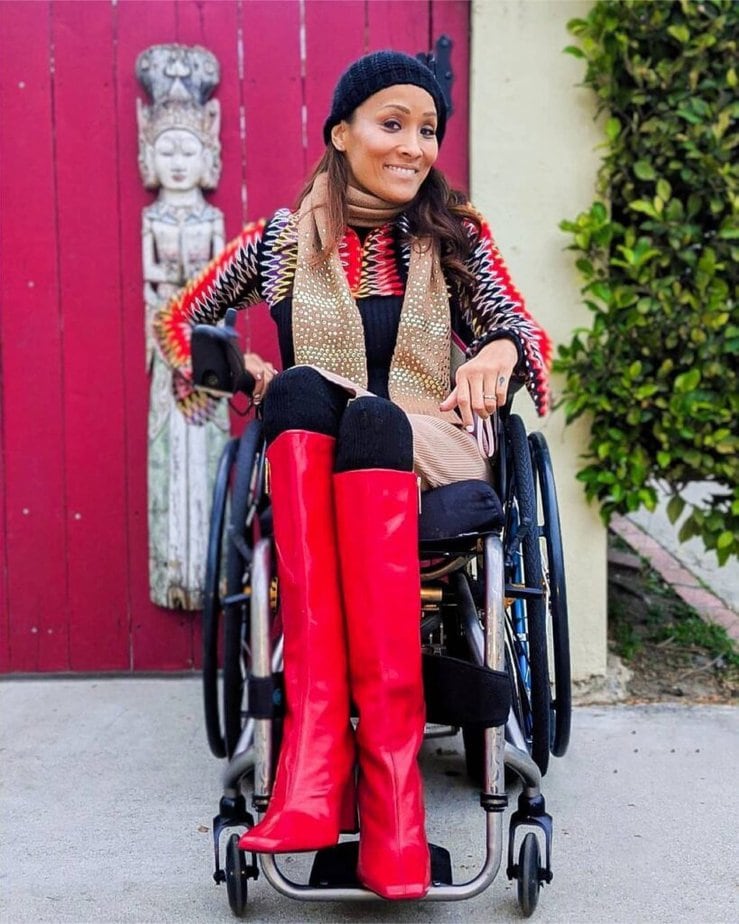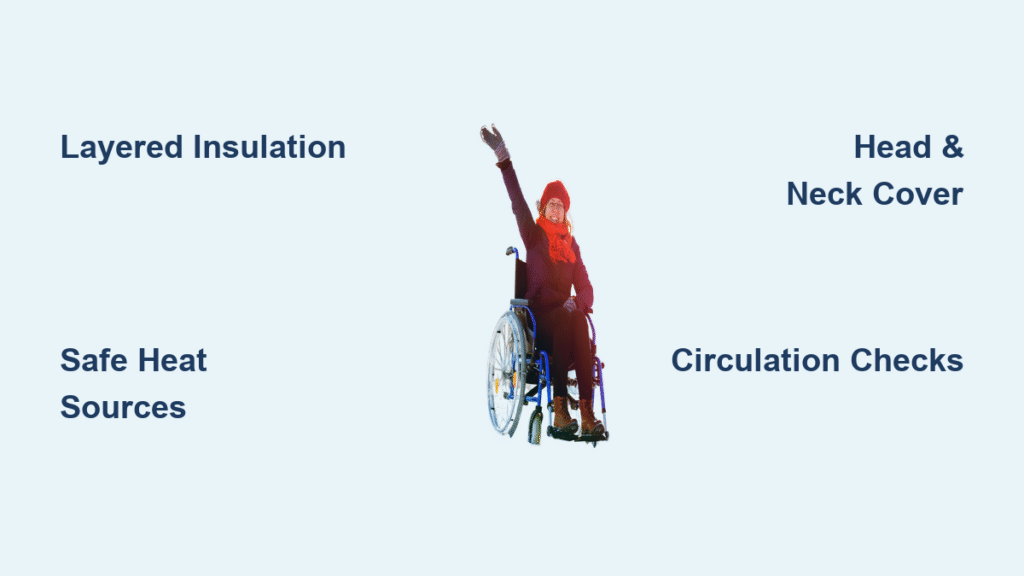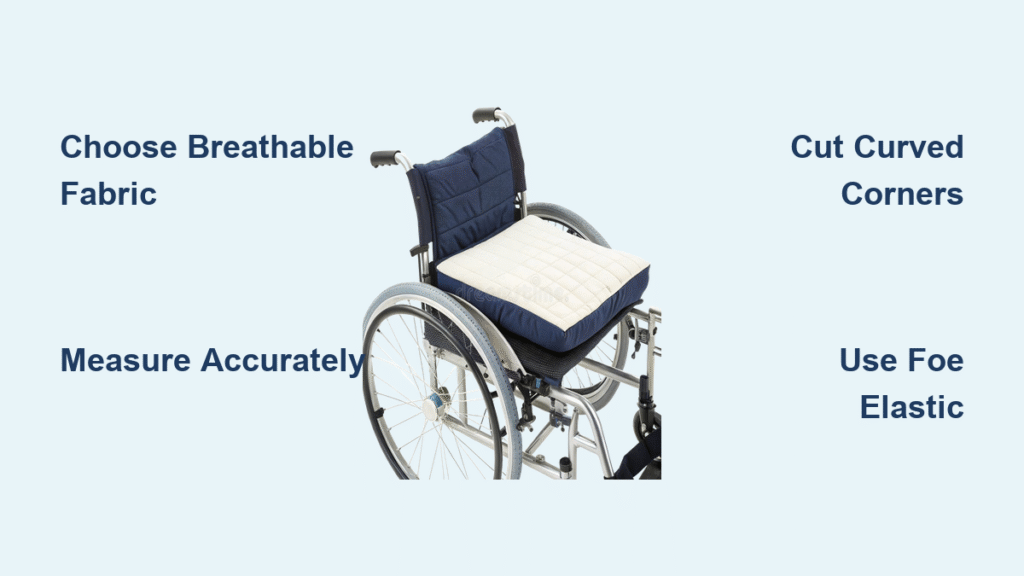Winter’s bite feels sharper when you’re seated. While others generate heat by stomping feet or swinging arms, wheelchair users face unique challenges—impaired sweating below injury levels, compromised leg circulation, and dangerous delays in sensing cold. For spinal cord injuries above T6, your body literally can’t regulate temperature like it should. This isn’t about comfort; it’s about preventing hypothermia, frostbite, and pressure sores. You’ll learn proven strategies specifically designed for seated mobility, from adaptive layering to safe heat sources that won’t cause burns. No generic advice—just actionable solutions that protect your health and independence all winter long.
Master Wheelchair-Specific Layering
Base Layers That Manage Moisture Without Restriction
Your skin stays damp longer when you can’t move your legs, making moisture-wicking critical. Skip cotton—it traps sweat and chills you. Instead, choose merino wool or synthetic fabrics that pull moisture away even during minimal movement. For SCI above T6, prioritize thermal underwear with extended backs to eliminate gaps when seated. Compression garments double as circulation aids but size up slightly—tight layers restrict blood flow in pressure-prone areas. Silk base layers work best for sensitive skin near pressure sores. Always test new fabrics for 15 minutes against your inner wrist first; redness means skip it.
Insulation Layers That Won’t Bunch When Seated
Traditional puffy jackets collapse and lose warmth when compressed against your chair back. Target three seated-specific solutions: Fleece vests warm your core without seat bulk, wheelchair-specific jackets feature shorter backs and longer fronts to stay tucked, and quilted ponchos drape naturally over legs. Avoid hooded insulation—it pulls forward when seated, exposing your neck. For extreme cold, layer a vest under a poncho: the vest traps heat at your core while the poncho shields legs from wind.
Outer Shells That Defeat Wind Without Hindering Movement
Wind strips heat 25x faster than still air. Your shell must have wheelchair-friendly features: back openings to prevent fabric bunching, side zippers for seated dressing, magnetic closures for limited hand function, and extended sleeves that cover wrists during propulsion. Waterproof materials like Gore-Tex are non-negotiable—even light snow soaks through regular fabrics. Pro tip: Test any jacket by sitting in it before buying. If the back rides up or sleeves pull back, keep looking.
Protect Critical Heat Loss Zones Immediately

Head and Neck Coverings That Stay Put
You lose 40% of body heat through your head—and your legs can’t compensate. Skip trendy beanies; choose Filson-style hunting hats with ear flaps and neck coverage ($175) or thin wool beanies that fit under helmets. Hoods must attach securely to jackets (not dangle loosely) to avoid blowing away mid-ride. Never wear headwear with drawstrings—they’re a wheelchair entanglement hazard. In sub-zero temps, layer a balaclava under your hat but leave nose/mouth exposed to prevent fogged glasses.
Gloves That Maintain Push Rim Grip
Cold hands can’t grip rims safely. Atlas winter gardening gloves ($8–12) are the wheelchair community’s secret weapon: waterproof, grippy, and warm enough for most conditions. For extreme cold, wear mittens over thin liner gloves—remove mittens only for transfers. Leather wheelchair gloves with Thinsulate lining offer durability but avoid bulky styles that reduce rim control. DIY fix: Pull long wool socks up to your elbows for instant arm/wrist warmth during stationary waits. Always carry chemical hand warmers in a chest pocket—not your lap—to heat blood flowing to arms.
Leg and Foot Solutions That Prevent Sliding
Static legs get coldest fastest. Ditch standard blankets—they slide off and tangle in wheels. Instead, use:
– Wheelchair leg covers with Velcro straps that attach directly to footplates
– Knee-high merino socks (layer thin liner socks beneath)
– Waterproof boots with magnetic closures for seated donning
Never use electric socks—they’ve caused severe burns in users with reduced sensation. For seated transfers, keep a small wool lap blanket in your chair bag; it tucks neatly under your thighs without shifting.
Deploy Safe Heat Sources—Not Dangerous Ones
Microwaveable Warmers With Burn Prevention
Corn cuddlers ($10–20) provide 2–4 hours of core warmth when placed between your back and chair. Critical safety step: Microwave only 30 seconds at a time, then test on your cheek (more sensitive than hands). Never apply directly to skin—wrap in a thin towel first. Discard if fabric shows scorch marks. For DIY versions, sew dry corn into cotton pouches (¼ cup per pocket).
Electric Heating: Strict Rules for Safety
Electric heat below your sensation level risks severe burns. Documented cases show car seats hitting 180°F—enough to cook skin in minutes. Only use if:
– You have full sensation below injury level
– Devices have auto-shutoff (max 110°F)
– You place barriers like thick towels between heat source and skin
Heated gloves (Fly Racing) and jackets (Gobi Heat) are safest. Never use heating pads on legs or seat cushions.
Chemical Warmers: Strategic Placement
Disposable warmers last 6–8 hours but placement is critical. Stick toe warmers inside gloves (not boots—they overheat feet). For core warming, place chest warmers in an inner jacket pocket—not against bare skin. Rotate stock annually; expired warmers can overheat.
Build Your Emergency Winter Kit Now

Vehicle Essentials That Save Lives
Store these in your accessible vehicle compartment:
– Wool blankets (synthetics lose warmth when wet)
– 10+ chemical warmers (check expiration quarterly)
– HandSteady spill-proof mug with thermos of broth
– Portable phone charger (cold drains batteries fast)
– Emergency contact list laminated to chair frame
Hypothermia Response Protocol
If you notice slurred speech, confusion, or drowsiness in yourself or others:
1. Move to warmth immediately—don’t wait
2. Remove wet clothing layer by layer
3. Wrap in dry blankets (add body heat from others)
4. Sip warm broth—not caffeine or alcohol
Never apply direct heat to cold limbs; it forces cold blood to your core.
Daily Circulation Checks That Prevent Pressure Sores
Cold reduces blood flow, escalating pressure sore risks. Each evening:
– Compare skin color on both legs (pale/blue = danger)
– Check temperature differences with back of hand
– Note any new red spots that don’t fade in 30 minutes
– Do 10 wheelchair push-ups hourly to activate leg circulation
Budget Solutions That Actually Work
Under $25 Winter Upgrades
- Atlas gloves ($12): Outperform pricier “adaptive” brands
- Corn cuddlers ($15): Last 2+ seasons with proper care
- Fleece leg covers ($20): Cut from thrifted blankets to size
- Knee-high wool socks ($10): Layer thin synthetics beneath
When to Invest in Premium Gear

Splurge on:
– Adaptive jacket ($250+): Back-opening designs prevent bunching
– PowerDot stimulator ($199): Boosts leg circulation via muscle pulses
– Custom wheelchair cover ($150): Waterproof with secure Velcro straps
Avoid cheap heated jackets—they lack temperature safeguards.
Long-Term Warmth Maintenance
Indoor Temperature Strategies
- Program smart thermostats to 72°F before you arrive home
- Use radiant heaters (not forced air) near your chair—they warm objects, not drafts
- Eat hot meals like stews daily; digestion generates internal heat
- Switch to weighted blankets—they provide 30% more warmth than regular throws
Transfer Warmth Protocol
Never transfer onto cold surfaces. Before moving:
1. Preheat your wheelchair seat with a corn cuddler
2. Position blankets to cover legs immediately post-transfer
3. Keep emergency blanket in vehicle for unexpected delays
4. Time transfers for midday when temps peak
Staying warm in a wheelchair demands strategy, not just extra layers. By mastering seated-specific layering, deploying safe heat sources, and conducting daily circulation checks, you prevent life-threatening complications while maintaining independence. Start with the $12 Atlas gloves and corn cuddlers—they solve 80% of cold issues immediately. Remember: Hypothermia can set in within 10 minutes in freezing rain. Your winter safety isn’t optional—it’s built into every layer, every transfer, and every emergency warmer you keep ready. Implement one solution today; your body will thank you when the thermometer drops.





